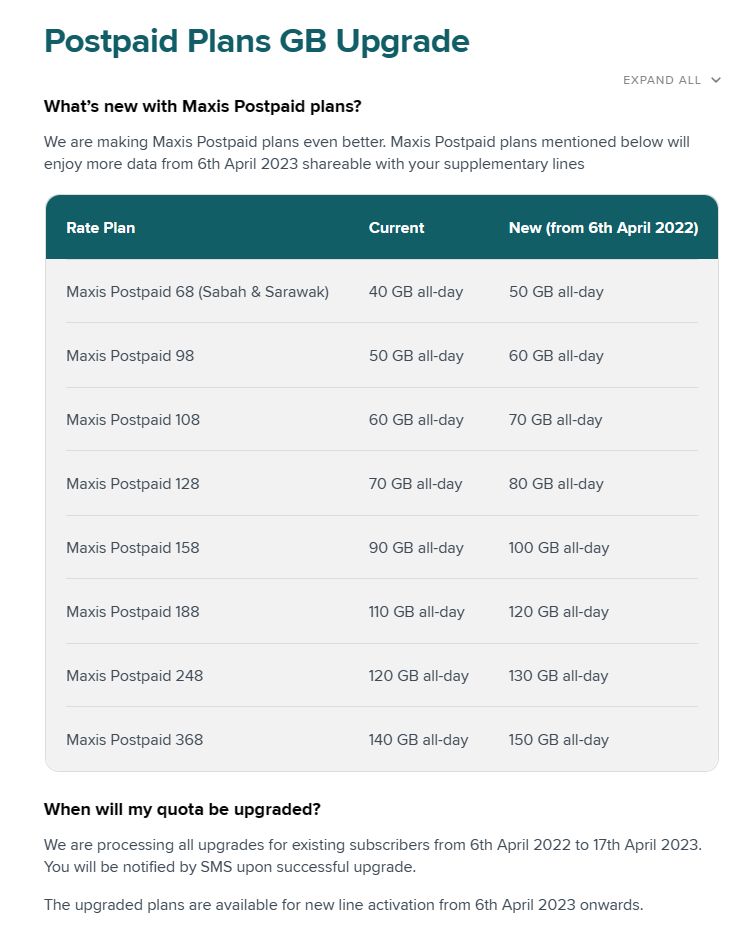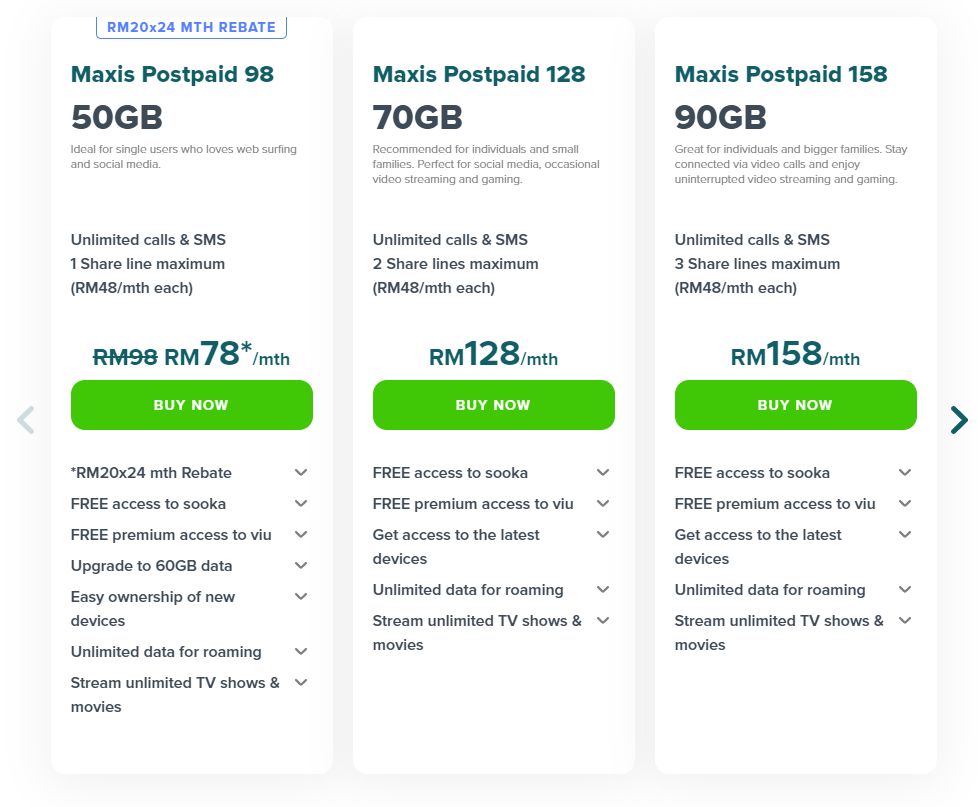Maxis is doing yet another data quota upgrade for its postpaid plans. Across the board, all Maxis Postpaid plans will receive an additional 10GB of quota starting from 6th April 2023.

As stated in the FAQ, the Maxis Postpaid 68 for Sabah and Sarawak, will get bumped from 40GB to 50GB, while Postpaid 98 will get upgraded from 50GB to 60GB of data. The same 10GB upgrade is also applicable for the higher tiers.
According to Maxis, the data upgrade will be done in stages from 6th to 17th April 2023. Customers will be notified by SMS once the free upgrade is completed. The data quota won’t make any difference for customers with Maxis Home Fibre as the postpaid plans with bundled fibre broadband will automatically enjoy unlimited data. However, it looks like the Maxis Postpaid Share 48 remains unchanged with 30GB of data.

It is also worth highlighting that Maxis is currently having a promotion for Maxis Postpaid 98 registrations. For new subscribers, the plan can be yours for RM78/month with the current RM20 x 24 months rebate. On top of that, Maxis is also offering free access to Sooka and Viu.
These Maxis Postpaid plans which offer unlimited calls and SMS (formerly known as MaxisONE Plans) are almost a decade old and they are currently one of the oldest postpaid plans in Malaysia. The current RM98, RM128, RM158 and RM188 options were first introduced back in 2015 with the base RM98 plan having just 1GB of data while the RM188 option came with 7GB of data.
Over the years, Maxis has constantly upgraded the plans with more data and the last revision was in January 2022 where the RM98 plan offered 50GB of data, while the RM188 plan came with 110GB of data. The green telco has recently upgraded its Hotlink Postpaid plans with up to 20GB of extra data.
Maxis is currently the only major telco without 5G access as it waits for the Malaysian government to conclude its review into Digital Nasional Berhad (DNB). The government has yet to decide whether to keep DNB as the 5G single wholesale network or to liberalise the market by allowing a second competing 5G network.








